 July 11, 2019 John E. Ross, KD8IDJ, Editor
| ||||||
ARRL Announces "Happy 150!" Hiram Percy Maxim Birthday Celebration This year marks the 150th anniversary of the birth of ARRL's first president and cofounder Hiram Percy Maxim (HPM), W1AW, born on September 2, 1869. ARRL will hold an operating event to celebrate HPM's legacy, getting under way at 0000 UTC on August 31, and continuing until 2359 UTC on September 8. The event is open to all radio amateurs.
Permitted modes: CW, phone (any voice modes), and digital. Submit Cabrillo log or ADI files. ARRL will calculate all final scores based on participants' uploads to the ARRL event web app (link not yet active). The 84 available multipliers only count once. These include the 83 ARRL/RAC Sections (RAC Sections include the Canadian Northern Territories, encompassing VE8, VY1, and VY0) and DX. The W1AW operating schedule during this period may be adjusted as necessary to accommodate on-air celebration operating activities. Contacts with W1AW/150 will earn 3 points each. Contacts with any ARRL member will earn 2 points each. These stations will also identify as <call sign>/150. Contacts with nonmembers will earn 1 point each. Participants can earn 150 bonus points by:
Online certificates will be awarded, and are available via download only. Updates and results will be publicized. There are no power or operator categories. Participating ARRL members who use Logbook of The World (LoTW) are encouraged to create a separate LoTW certificate for uploading <call sign>/150 contacts. Members then should upload logs for this event using their /150 certificates. Submissions must be via the online web app. No email or paper submissions will be accepted. Window Closes on July 15 for Volunteer Monitor Program Applications Monday, July 15, will be the last day that applications for the new Volunteer Monitor Program will be accepted. Some 250 applications have been submitted to fill approximately 150 Volunteer Monitor (VM) positions in the program, which is succeeding the Official Observer (OO) program. Retired FCC special counsel and former Atlantic Division Vice Director Riley Hollingsworth, K4ZDH, is overseeing ARRL's role in the development and implementation of the program, and he has been interviewing all applicants. Those not selected as VMs will be placed in a reserve pool. Current OOs have been invited to apply for appointments.
ARRL and the FCC have signed a Memorandum of Understanding (MOU) that establishes the Volunteer Monitor Program as a replacement for the Official Observers. The first Volunteer Monitors could be in place and ready to begin their duties by this fall. FAA Reauthorization Act of 2018 Changes Recreational Drone Flying Requirements The FAA Reauthorization Act of 2018 includes changes to recreational drone flying in the US. Radio amateurs have used drones to inspect antenna systems and terrain and to carry support lines aloft, as well as for other purposes. The FAA considers those who fly their drones for fun as recreational users. The FAA Reauthorization Act of 2018 describes how, when, and where owners may fly drones for recreational purposes. These broad guidelines should apply to most Amateur Radio users of drones.
Recreational flyers who intentionally violate any of these safety requirements and/or operate in a careless and reckless manner could be liable for criminal and/or civil penalties. Read the Authorization for limited recreational operations as described in Section 44809 (PDF). All limited recreational operations should be conducted in accordance with this authorization. For more information, read Advisory Circular 91-57B.
The new law also will require that drone operators pass an online aeronautical knowledge and safety test and carry proof of test passage. The FAA is developing the test in consultation with stakeholders. Recreational flyers would have to pass the test, which could be administered electronically. The FAA will provide additional guidance and will notify when the test is available. The FAA also will issue guidance for how it will recognize community-based organizations. More detailed information about the FAA's plan to fully implement the requirements of Section 349 of the FAA Reauthorization Act of 2018 is available in the Federal Register. So Now What? Podcast "Fan Questions" will be the focus of the new (July 11) episode of the So Now What? podcast for Amateur Radio newcomers.
So Now What? is sponsored by LDG Electronics, a family owned and operated business with laboratories in southern Maryland that offers a wide array of antenna tuners and other Amateur Radio products. ARRL Communications Content Producer Michelle Patnode, W3MVP, and ARRL Station Manager Joe Carcia, NJ1Q, co-host the podcast. Presented as a lively conversation, with Patnode representing newer hams and Carcia the veteran operators, the podcast will explore questions that newer hams may have and the issues that keep participants from staying active in the hobby. Some episodes will feature guests to answer questions on specific topic areas. Listeners can find So Now What? on Apple iTunes, Blubrry, Stitcher (free registration required, or browse the site as a guest) and through the free Stitcher app for iOS, Kindle, or Android devices. Episodes will be archived on the ARRL website. Shop AmazonSmile on Prime Day and Support ARRL Amazon Prime Day is almost here! Deals start at 3 AM ET on Monday, July 15, and continue through Tuesday, July 16. Prime Day is one of the biggest shopping days of the year.
With every qualifying purchase you make through AmazonSmile, Amazon will make a contribution to ARRL. This helps ARRL extend its reach in public service, advocacy, education, technology, and membership. Support the Amateur Radio Service and ARRL with your eligible purchase on Amazon Prime Day, or on any day of the year. For more information on Amazon Prime Day and AmazonSmile visit AmazonSmile and log in to your Amazon account. IARU President Offers Assurances Regarding French 144 - 146 MHz Allocation Proposal International Amateur Radio Union (IARU) President Tim Ellam, VE6SH/G4HUA, said his organization empathizes with the concerns of radio amateurs worldwide regarding a French proposal to allocate 144 - 146 MHz to the Aeronautical Service on a primary basis, essentially sharing it with Amateur Radio. The band is currently allocated to Amateur Radio on a primary basis around the world. Ellam this week offered assurances that the IARU is on top of the matter, which is still a "There is a lot of misinformation circulating as to what the proposal is seeking and how IARU is responding to it," Ellam told ARRL. "While the proposal is a concern, petitions and the like, while well intended, are going to have very limited value and, in fact, may harm the steps being taken in the regulatory environment." The French proposal, submitted last month to a pre-WRC-19 European Conference of Telecommunications and Postal Administrations (CEPT) meeting, included 144 - 146 MHz within a range of frequencies to be studied for future airborne, non-safety applications in the Aeronautical Service. Germany opposed the move, and IARU "objected strongly," Ellam said. "Nonetheless, the proposal was carried forward to the next meeting of the CEPT Conference Preparatory Group in late August." IARU anticipates that other countries attending the August meeting will oppose the inclusion of 144 - 146 MHz as a frequency range to be considered for the WRC-23 agenda, Ellam said.
Since the June meeting, IARU Region 1 (Europe, Africa, and the Middle East) has asked its member-societies to contact their national administrations (i.e., governments) to explain the importance of the 144 - 146 MHz primary allocation, Ellam recounted. "IARU is also taking other actions to make its views known to those involved in the proposal," he said. "If accepted as a WRC-23 Agenda Item, this proposal would require 4 years of studies by administrations," Ellam stressed. "Considering the challenges of sharing spectrum with aeronautical systems, it seems inevitable that the conclusion of such studies would be that sharing with a widely used part of the amateur spectrum presents too many problems to be viable." Ellam encouraged individual radio amateurs who want to help to become members of their IARU member-society. "If anything," Ellam concluded, "this recent news should serve as a timely reminder that defense of the amateur spectrum does not just happen. Your member-societies and the IARU constantly work at defending the amateur allocations." Read more. The K7RA Solar Update Tad Cook, K7RA, Seattle, reports: As was the case in the previous reporting week, the current week had only 1 day, July 13, on which sunspots made a brief appearance; both were new spots from Cycle 25, according to their magnetic signatures. The average daily solar flux declined marginally from 67.5 to 67.1.
Predicted planetary A index is 8 on July 1; 5 on July 12-27; 8 on July 28; 5 on July 29 - August 4; 12, 15, and 12 on August 5 - 7; 5 on August 8 - 23, and 8 on August 24. Here's an interesting article on space weather from The Conversation: "Solar weather has real, material effects on Earth." Space Weather Woman Tamitha Skov, WX6SWW, has posted a new video. Sunspot numbers for July 4 - 10 were 0, 0, 0, 12, 0, 0, and 0, with a mean of 1.7. The 10.7-centimeter flux was 67.8, 67.5, 66.5, 67.3, 66.5, 66.8, and 67.6, with a mean of 67.1. Estimated planetary A indices were 5, 5, 3, 5, 9, 17, and 15, with a mean of 8.4. Middle latitude A index was 8, 6, 5, 5, 7, 16, and 13, with a mean of 8.6. A comprehensive K7RA Solar Update is posted Fridays on the ARRL website. For more information concerning radio propagation, visit the ARRL Technical Information Service, read "What the Numbers Mean...," and check out K9LA's Propagation Page. A propagation bulletin archive is available. Monthly charts offer propagation projections between the US and a dozen DX locations. Share your reports and observations. Just Ahead in Radiosport
See the ARRL Contest Calendar for more information. For in-depth reporting on Amateur Radio contesting, subscribe to The ARRL Contest Update via your ARRL member profile email preferences. W1AW, NU1AW to be Headquarters Multipliers for the IARU HF Championship During the IARU HF Championship contest July 13 - 14, the ARRL HQ station will be W1AW/7, on the air from Nevada with Tom Taormina, Both single and multioperator stations may operate the entire 24-hour period, and stations may operate on phone, on CW, or on both modes. IARU member-society HQ stations send signal report and official IARU member-society abbreviation (e.g., ARRL). Members of the IARU Administrative Council and the three IARU regional Executive Committees send "AC," "R1," "R2," and "R3," as appropriate. All other stations send signal report and ITU zone. Historic Amateur Radio Contact via Moon-Orbiting Satellite Reported A contact between radio amateurs in Germany and China took place on July 1 via the moon-orbiting LO-94 satellite, DSLWP-B, launched in May 2018. The two-way exchange between Reinhard Kuehn, DK5LA, in Sorup, Germany, and Harbin Institute of Technology club station BY2HIT (operated by Wei Mingchuan, BG2BHC), in Harbin, China, occurred between 0551 and 0728 UTC, according to reports. The GMSK-to-JT4G repeater onboard DSLWP-B was used to make the contact, the first ever via a lunar-orbiting repeater.
As Estévez explained it, the GMSK-to-JT4G repeater works by sending commands to the satellite that embed a 13-character message, using the same frequency and a similar protocol to the one that commands the camera and other satellite functions. He said sending a message in this fashion takes a little longer than 1 minute. An open telecommand protocol allows radio amateurs to take and download images, and DSLWP-B transmitted images of the moon and Earth during this week's solar eclipse. DSLWP-B was launched as a secondary payload with the Quequiao relay satellite as part of the Chang'e 4 mission to the far side of the moon. DSLWP stands for "Discovering the Sky at Longest Wavelengths Pathfinder," and was designed to test low-frequency radio astronomy and space-based interferometry. The repeater uplink is on 2 meters and the downlink is on 70 centimeters. ARISS-International Delegates Meet in Montreal Representatives of nine nations were on hand as Amateur Radio on the International Space Station (ARISS) held its 2019 "face-to-face" meeting of international delegates at the Canadian Space Agency in Montreal, "With today's transfer of the radios to ARISS-Russia, we are one step closer to an enhanced Amateur Radio system on board the ISS, supporting various operations such as SSTV, voice communication, APRS, and a variety of experiments," ARISS-International said in announcing the presentation. The ARISS Hardware Team met on June 25.
Other topics included ARISS' future participation in NASA's Deep Space Gateway (DSG) program. ARISS is the only noncommercial entity whose ideas are under study by the program. The ARISS plan focuses on Amateur Radio communication, including optical communication channels, as well as equipment development, team cooperation, education, and public outreach. Those attending the conference included Radio Amateurs of Canada (RAC) President and ARISS-Canada Delegate for RAC Glenn MacDonell, VE3XRA; AMSAT-NA President Joe Spier, K6WAO, and AMSAT-Italia President Emanuele D'Andria, I0ELE. ARRL Southeastern Division Director Greg Sarratt, W4OZK, attended in his role as chair of the ARRL Board's new ARISS Committee. Rosalie White, K1STO, represented ARRL as an ARISS-US delegate and handled the duties of ARISS-International Secretary. The other ARISS-US delegate was Dave Taylor, W8AAS. Read more. -- Thanks to Dave Jordan, AA4KN, ARISS Public Relations, and Rosalie White, K1STO In Brief...
Upcoming ARRL Section, State, and Division Conventions
Find conventions and hamfests in your area.
. .
Subscribe to...
Free of charge to ARRL members...
| ||||||
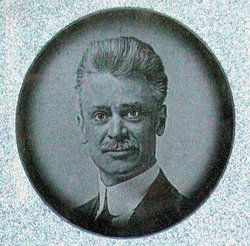 The goal is straightforward: Contact as many participating stations as possible. W1AW and all ARRL members will append "/150" to their call signs during this event (DX operators who are ARRL members may identify as <call sign>/150, if permitted by their country of license.) Participating stations will exchange signal report and
The goal is straightforward: Contact as many participating stations as possible. W1AW and all ARRL members will append "/150" to their call signs during this event (DX operators who are ARRL members may identify as <call sign>/150, if permitted by their country of license.) Participating stations will exchange signal report and  Approved by the ARRL Board of Directors at its July 2018 meeting, the new Volunteer Monitor Program represents a formal agreement between the FCC and ARRL in which volunteers trained and vetted by ARRL will monitor the airwaves and collect evidence that can be used to correct misconduct, as well as to recognize exemplary on-air operation. ARRL will refer incidents of flagrant violations to the FCC for action, in accordance with FCC guidelines, and the FCC will give priority to enforcement cases developed by the Volunteer Monitor Program. The FCC proposed the program following the closures of several FCC regional offices and a reduction in field staff.
Approved by the ARRL Board of Directors at its July 2018 meeting, the new Volunteer Monitor Program represents a formal agreement between the FCC and ARRL in which volunteers trained and vetted by ARRL will monitor the airwaves and collect evidence that can be used to correct misconduct, as well as to recognize exemplary on-air operation. ARRL will refer incidents of flagrant violations to the FCC for action, in accordance with FCC guidelines, and the FCC will give priority to enforcement cases developed by the Volunteer Monitor Program. The FCC proposed the program following the closures of several FCC regional offices and a reduction in field staff..JPG) Register
Register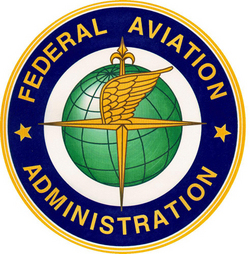 The FAA is upgrading the online system, known as LAANC (the Low Altitude Authorization and Notification Capability), so that recreational operations can get automated airspace authorizations to fly in controlled airspace.
The FAA is upgrading the online system, known as LAANC (the Low Altitude Authorization and Notification Capability), so that recreational operations can get automated airspace authorizations to fly in controlled airspace.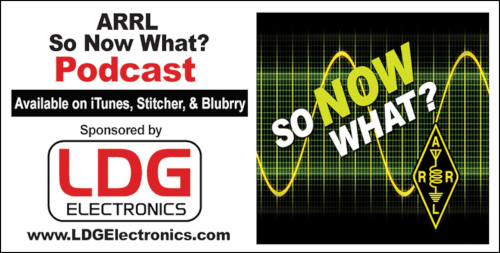 If you're a newly licensed Amateur Radio operator, chances are you have lots of questions. This biweekly podcast has answers! So Now What? offers insights from those who've been just where you are now. New episodes will be posted every other Thursday, alternating new-episode weeks with the
If you're a newly licensed Amateur Radio operator, chances are you have lots of questions. This biweekly podcast has answers! So Now What? offers insights from those who've been just where you are now. New episodes will be posted every other Thursday, alternating new-episode weeks with the  As you browse the great deals available exclusively to Amazon Prime members, we invite you to shop at
As you browse the great deals available exclusively to Amazon Prime members, we invite you to shop at .jpg) regional issue, and is already working to keep the band in the hands of radio amateurs. While the issue could end up on the agenda of World Radiocommunication Conference 2023 (WRC-23), a lot would have to happen first.
regional issue, and is already working to keep the band in the hands of radio amateurs. While the issue could end up on the agenda of World Radiocommunication Conference 2023 (WRC-23), a lot would have to happen first.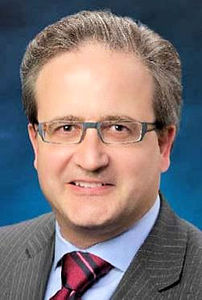
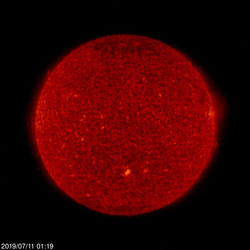 Predicted solar flux for the next 45 days is 68 on July 11 - 18, and 67 on July 19 - August 24.
Predicted solar flux for the next 45 days is 68 on July 11 - 18, and 67 on July 19 - August 24.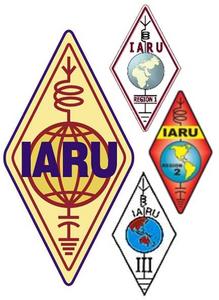 K5RC, as control operator. IARU Secretariat Club station NU1AW will be on the air from KC1XX in New Hampshire and K1TTT in Massachusetts and counts as the IARU HQ station.
K5RC, as control operator. IARU Secretariat Club station NU1AW will be on the air from KC1XX in New Hampshire and K1TTT in Massachusetts and counts as the IARU HQ station. "Using the GMSK-to-JT4G repeater is not easy, in terms of the signal power needed for the uplink,"
"Using the GMSK-to-JT4G repeater is not easy, in terms of the signal power needed for the uplink," 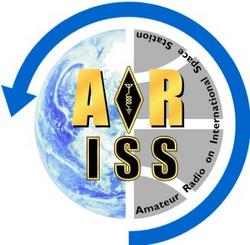 June 26 - 28. ARISS-Canada was the host for the gathering. A high point of the conference came when JVC Kenwood Software Manager Shin Aota, JL1IBD, presented two Kenwood TM-D710GA transceivers to ARISS-Russia delegate Sergey Samburov, RV3DR. One of the TM-D710GA radios will replace aging Amateur Radio equipment currently in use on the International Space Station, while the other will remain on Earth as a spare for training cosmonauts. For more than a year, these radios have undergone rigorous NASA qualification testing followed by final software configuration and verification.
June 26 - 28. ARISS-Canada was the host for the gathering. A high point of the conference came when JVC Kenwood Software Manager Shin Aota, JL1IBD, presented two Kenwood TM-D710GA transceivers to ARISS-Russia delegate Sergey Samburov, RV3DR. One of the TM-D710GA radios will replace aging Amateur Radio equipment currently in use on the International Space Station, while the other will remain on Earth as a spare for training cosmonauts. For more than a year, these radios have undergone rigorous NASA qualification testing followed by final software configuration and verification..jpg)
.jpg) Applications for the 2020 ARRL Foundation Scholarship Program will be accepted between September 1 and December 31, 2019. All applicants must be FCC-licensed radio amateurs, and many scholarships have other specific requirements, such as intended area of study, residence within a particular ARRL Division, Section or state, and license class. Applicants should review the scholarships and check off the ones for which they are eligible. If you complete an online application, you must also
Applications for the 2020 ARRL Foundation Scholarship Program will be accepted between September 1 and December 31, 2019. All applicants must be FCC-licensed radio amateurs, and many scholarships have other specific requirements, such as intended area of study, residence within a particular ARRL Division, Section or state, and license class. Applicants should review the scholarships and check off the ones for which they are eligible. If you complete an online application, you must also 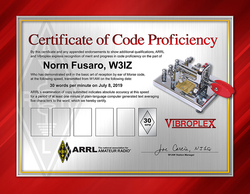 Starting with the August issue, QST will list the recipients of W1AW
Starting with the August issue, QST will list the recipients of W1AW 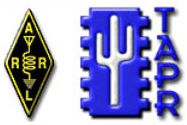 A final call has been issued to solicit technical papers for presentation at the ARRL/TAPR Digital Communications Conference (
A final call has been issued to solicit technical papers for presentation at the ARRL/TAPR Digital Communications Conference (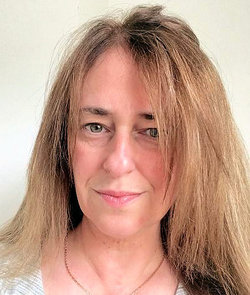 Cathryn Mitchell, M0IBG, the academic director of the University of Bath Doctoral College in the UK, has received the 2019 Edward Appleton Medal and Prize. She was recognized for her pioneering research in tomography and data assimilation that revealed a completely new perspective on the ionosphere in response to extreme space weather. "Mitchell innovated a completely new Earth observation technique by adapting medical tomography to image the Earth's ionosphere, thus revealing the dynamics of the near-Earth space environment," an
Cathryn Mitchell, M0IBG, the academic director of the University of Bath Doctoral College in the UK, has received the 2019 Edward Appleton Medal and Prize. She was recognized for her pioneering research in tomography and data assimilation that revealed a completely new perspective on the ionosphere in response to extreme space weather. "Mitchell innovated a completely new Earth observation technique by adapting medical tomography to image the Earth's ionosphere, thus revealing the dynamics of the near-Earth space environment," an 







